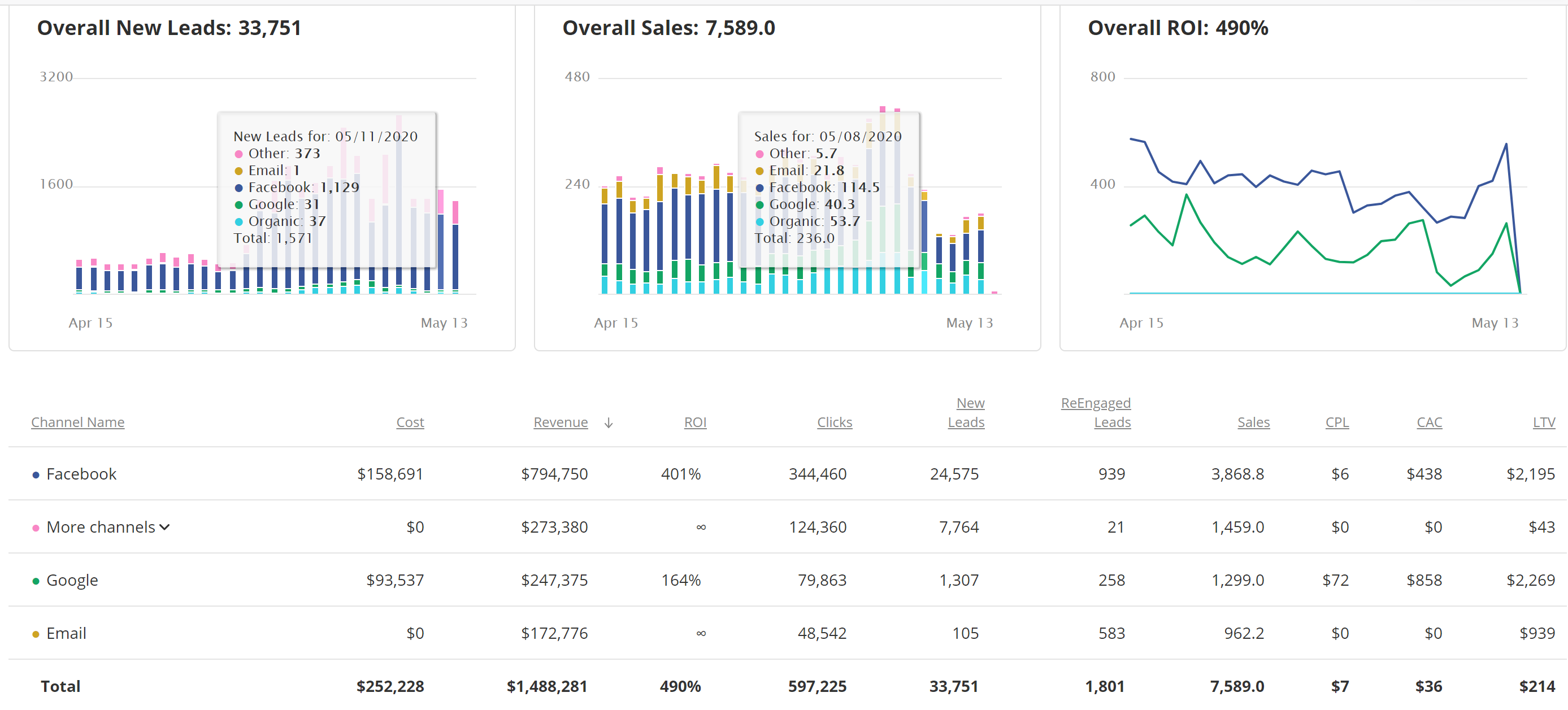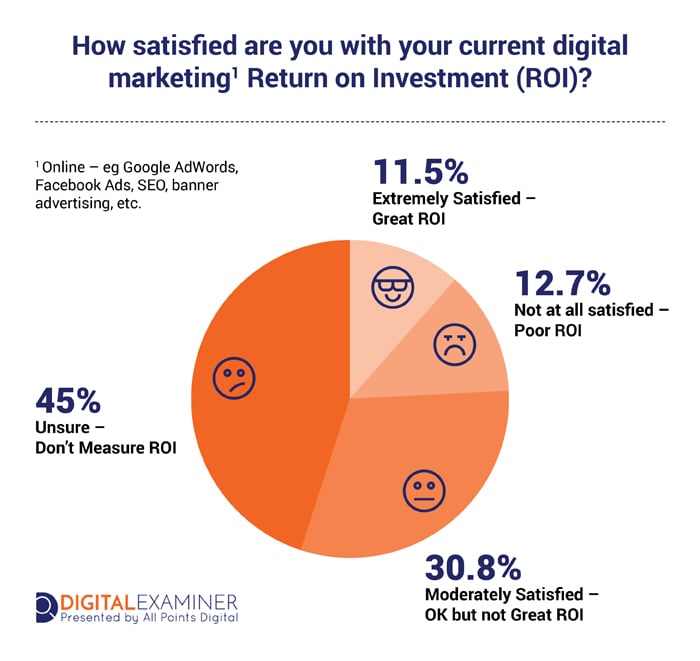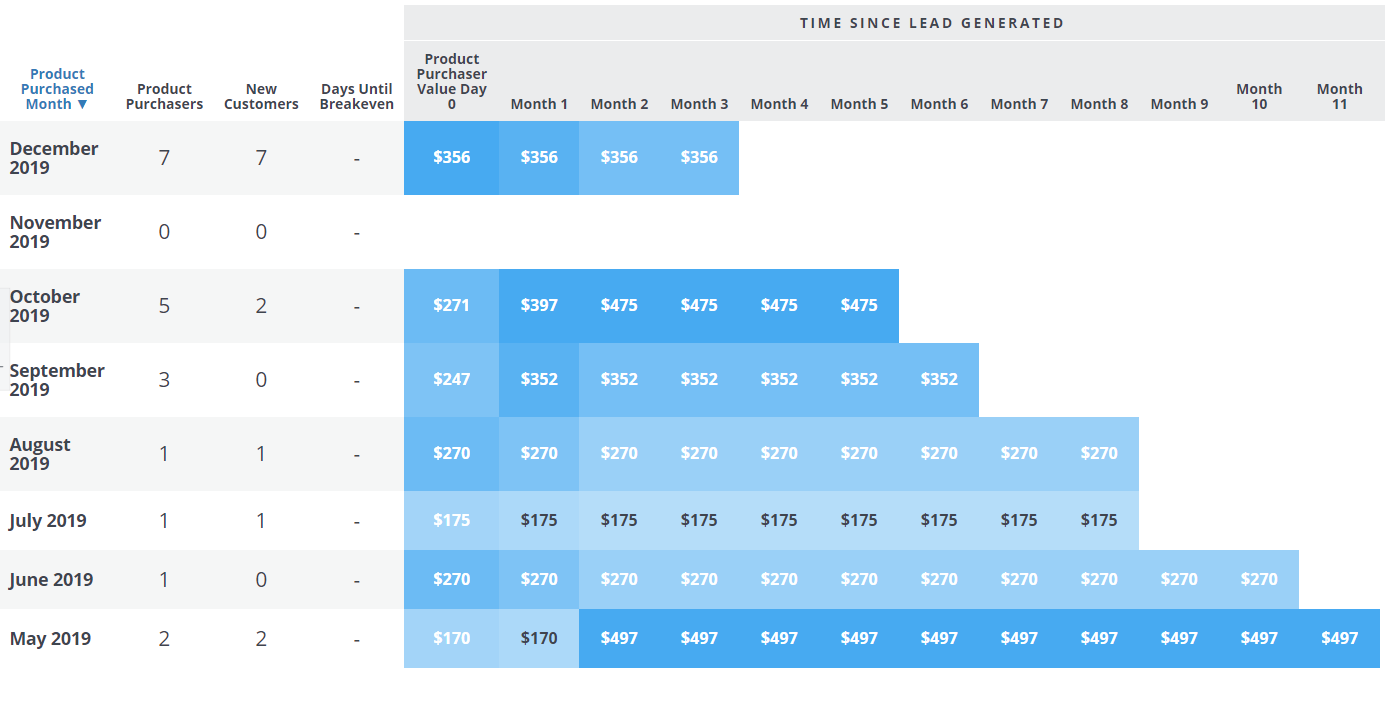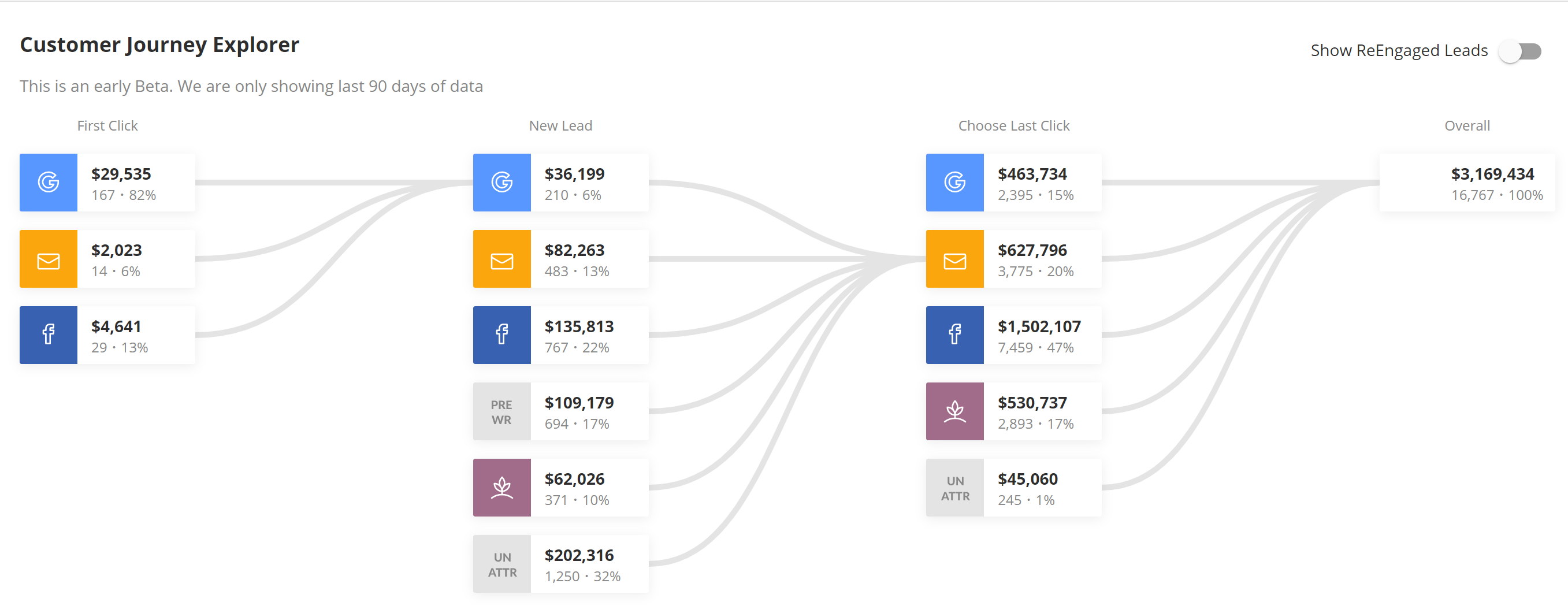In today’s multi-channel environment, industry analysts estimate that up to 44% of digital advertising spend is wasted due to inaccurate attribution, exacerbated by the shift to privacy-first data models.
Companies are using almost half their budgets to show the wrong ads to the wrong people at the wrong times.
If you want to avoid making the same mistake, you need to be measuring the digital marketing ROI of all your campaigns.
ROI data will help you spend your money where it has the most significant impact as well as scale down or pause campaigns that are wasting your ad budget.
But accurately tracking the ROI of your digital ad spend can be a challenge if you don’t know what you’re doing.
In this article, we will cover exactly how you can set up ROI tracking for your digital marketing campaigns, as well as common pitfalls and how to avoid them.
Are you frustrated by inaccurate ROI reporting?
Speak with an optimization expert from WickedReports today.
What is ROI in digital marketing?
In digital marketing, the term return on investment (ROI) refers to how much money you make for each dollar you spend.
If you spend $100 on ads, for instance, and make $500 in profit, the ROI would be five dollars for each dollar you spend.
It seems like a simple principle, right? But calculating ROI can be a lot more complicated than that. You have to accurately measure ad spend and results across platforms, keep track of running costs, and more before you can even get started.
As a result, almost half of small and medium-sized businesses that spend money on digital marketing don’t even try to measure their ROI.
These SMBs probably look at basic reports for some idea of performance, but measuring ROI is the only way to know if a campaign is worth it or not.
Focusing on vanity metrics like cost per click (CPC) will cost you in the long run, as you can’t dial on the ads driving conversions and revenue.
It might seem complicated, but when you have the formula and the right tools, measuring and calculating marketing ROI is possible for any business, small or large.
How do you calculate ROI in marketing?
There are two different approaches to calculating the ROI of your marketing campaigns.
The first model, gross ROI or return on ad spend (ROAS), simply calculates the ad spend vs. the revenue it generates.
Total Sales Revenue / Marketing Spend
Even Google uses this model for its famous “$2 in revenue for every $1 spent” statistic. So if you spend $100 on ads and sell $350 in products, the revenue ROI is $3.50.
With gross numbers, you want to see a high multiplicative return, since it only focuses on sales revenue and advertising costs.
Many marketing experts recommend aiming for at least 5X gross returns and above on your marketing campaigns — unless you have limited overhead costs, like with digital products or video courses.
The gross ROI is a decent indicator, but it doesn’t prove if the campaign is profitable or not. To calculate the actual profit, you need to include all your other costs and complete a more complicated formula.
Net Digital Marketing ROI Formula
The formula for net ROI from digital marketing campaigns is a little more complicated. It includes all your product-related costs, like the cost of goods, fulfillment and shipping, relevant payroll, and advertising into the equation.
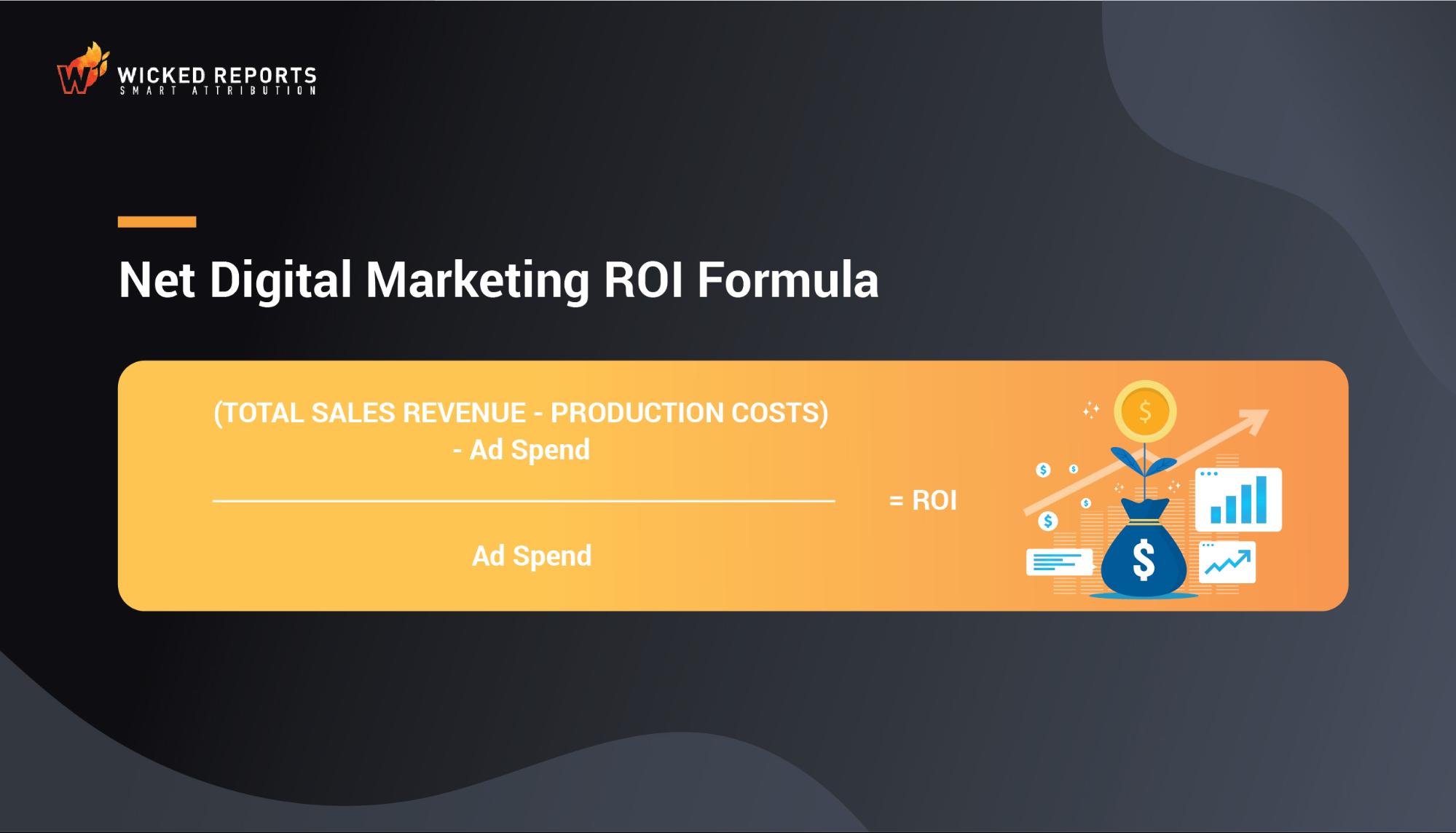
So if the combined cost of goods and shipping is $75, the profit before factoring in ad spend is $275 ($350 - $75).
Then, deduct the ad spend of $100, and you have your net profit; $175. Divided by the ad spend, the total ROI comes out to $1.75 for each dollar spent on advertising.
Anything above 1.0 in your net ROI makes a campaign well-worth it for your business, as it doesn’t factor in future sales and the lifetime value (LTV) of your customers.
In some instances, for example, if your repeat customer rate is high, or you use recurring subscriptions, even campaigns with initially negative ROI can be worth pursuing.
Digital marketing ROI metrics
Even if you don’t have the time or budget to set up reliable conversion and LTV tracking using a third-party solution right at this moment, if you focus on the right metrics, you can still get a good idea of whether the campaigns are worth it or not.
Unlike traditional marketing channels, most digital marketing platforms give you reliable metrics to work with.
Cost Per Lead (CPL)
If you only track a single conversion point, like the first time a prospective customer reaches out to your company, you can easily calculate this by dividing leads by ad spend.
No. of Leads / Ad Spend
Once you know what each lead costs, you’ve completed the first step towards figuring out if any lead campaign is worth it.
These costs can be more complicated to calculate with SEO or content marketing, where you need to consider payroll and other expenses rather than ad spend. It also depends on whether you single out leads as the only thing you include as a return on your investment.
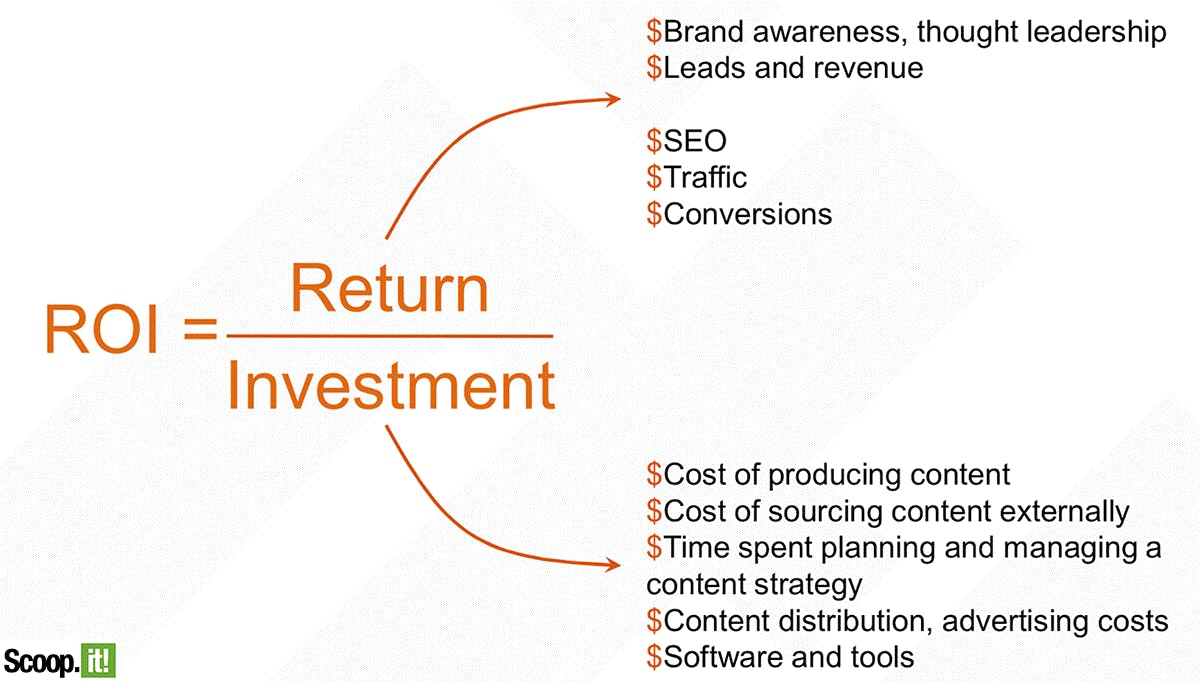
Average Closing Rate
Unless your sales team works closely with a CRM, you might not have direct access to this metric.
But you can easily calculate the number by dividing the total number of sales with the total number of leads in the previous quarter. (Even if you do things manually, you should have access to these numbers.)
Total Sales / Total Leads
Once you know how many leads become customers, on average, you can start calculating what each lead is worth.
Average Order Value / Average Transaction Value
The average value for each customer is an important metric to keep in mind when trying to forecast campaign ROI with incomplete data.
To get this number, just divide your total revenue with your number of customers.
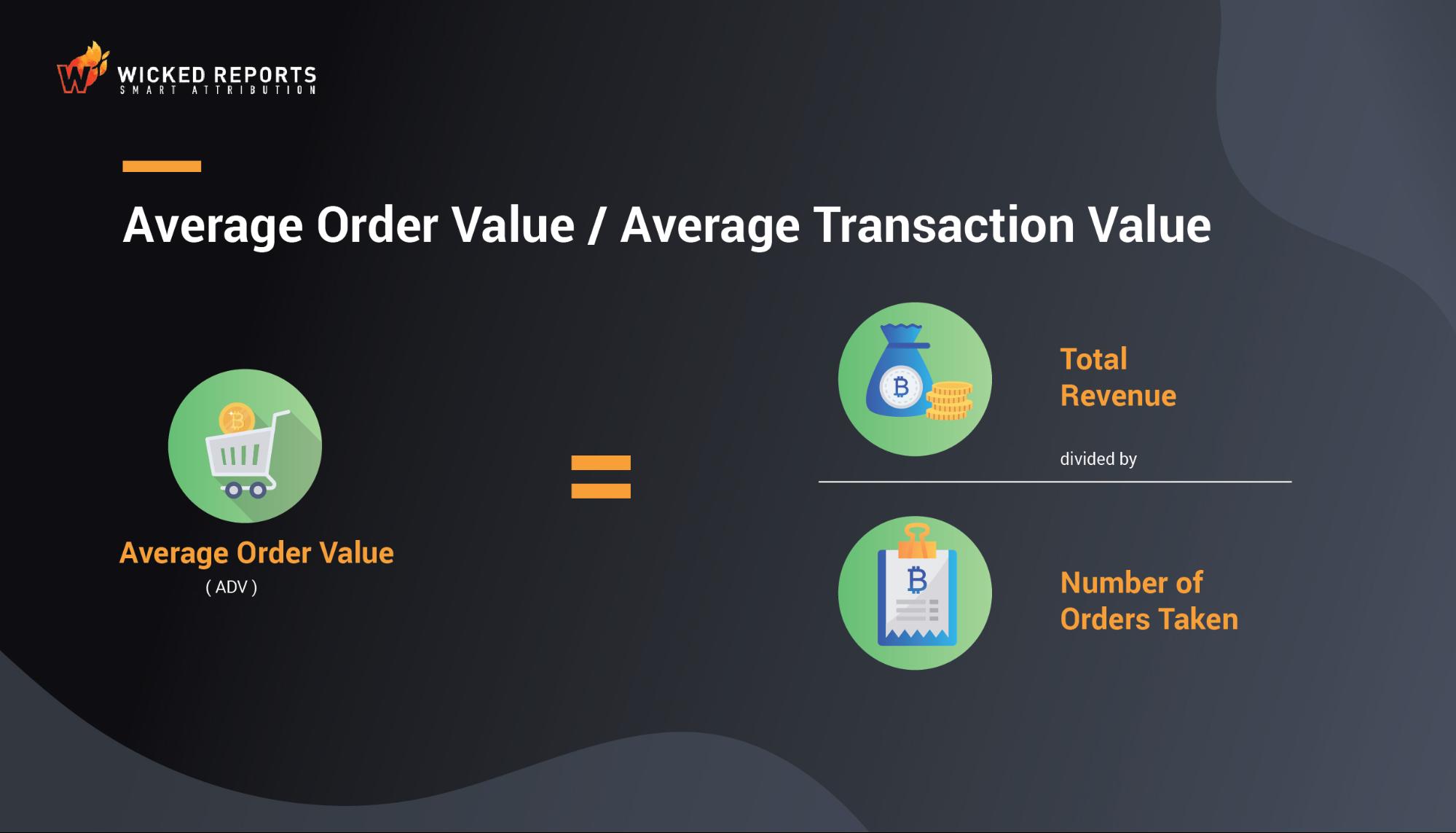
To judge whether your marketing efforts are an efficient investment, you need to know how much every customer is worth.
If you only offer a single product or service at a single price point, you don’t need to worry about this metric.
Average Value Per Lead / Earnings Per Lead
You can easily calculate the average value per lead with just two different metrics.
Total Sales Revenue / Total Leads
If you have the average cost and value per lead, you can quickly make educated guesses about whether or not a platform or campaign will yield a positive return in the mid to long term.
Cost Per Acquisition (CPA)
If you have a shorter sales process, and you can track sales conversions directly, you should focus on CPA instead of cost per lead.
Simply divide the number of generated sales with the total ad spend to calculate this metric.
New Customers / Ad Spend
Most advertising platforms will include this metric in their reporting, so you probably don’t even have to calculate it yourself.
Customer Lifetime Value (CLTV)
But to understand the real impact of your marketing campaigns, tracking the initial transaction is not enough. You have to measure how much a customer is worth to you over the lifetime of the customer relationship.
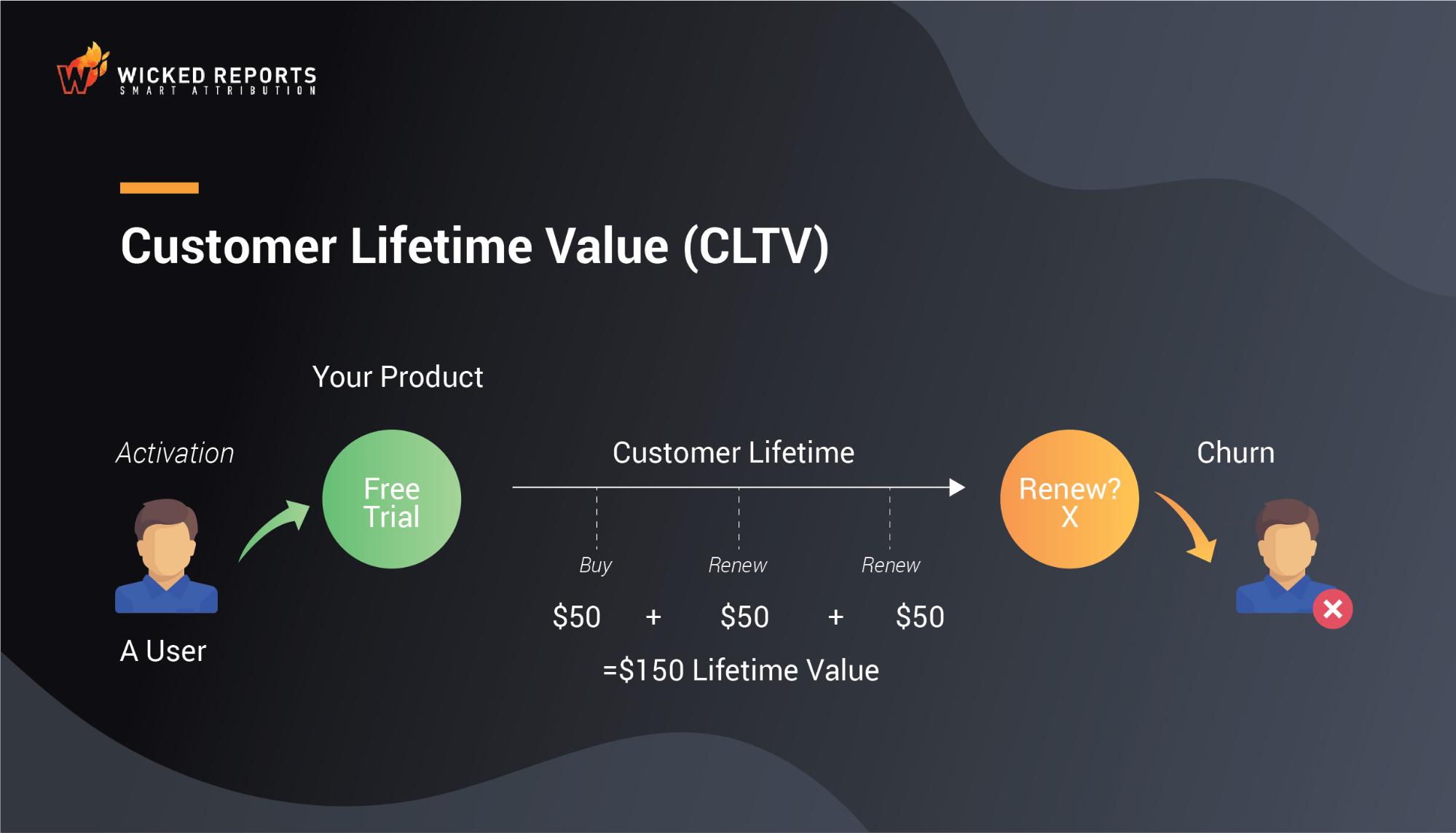
To calculate it, you need to know not only the transaction value but also the average total number of purchases a customer makes.
Average Transaction Value * Average Number of Purchases Per Customer (Repurchase Rate)
If your e-commerce platform tracks unique customers, you can also divide total revenue with unique customers, but make sure you set the period of time (cohort) to the maximum.
Total Sales Revenue / Unique Customers
With an understanding of CLTV, you can make predictions about the profitability of different campaigns, and quickly identify if a strategy is working or not.
But your predictions won’t always be accurate. Different platforms, campaigns, and ads could be generating completely different numbers.
If you rely on these metrics and average numbers rather than the real revenue generated by each platform, campaign, and strategy, you could miss out on essential insights.
You can also track the revenue generated by email, social media, organic search, or even a single blog post.
Our default mission control report shows reliable ROI and LTV numbers separated by channel.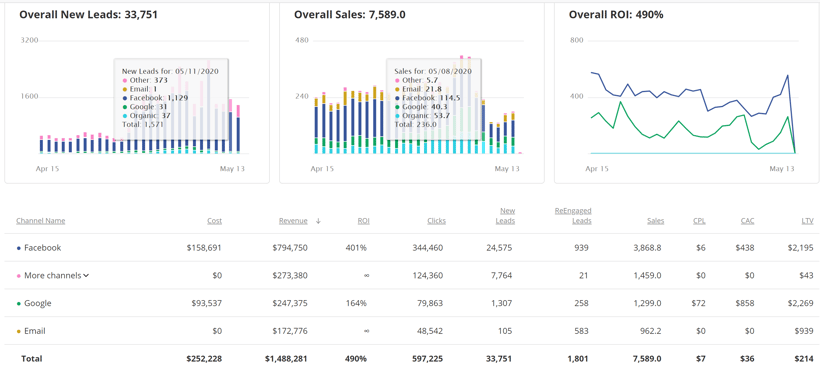
This insight can help you identify marketing opportunities, wasted ad spend, and more, no guesswork or complex calculations required.
How do you measure ROI for your digital marketing initiatives?
Now that you’ve learned what ROI is and how to calculate it, you need to learn how to measure it effectively for separate marketing channels, campaigns, and initiatives.
Luckily, it doesn’t involve you sitting with an excel sheet doing manual data entry every day for the rest of your life.
You can rely on different tools to track and attribute conversions, sales, and revenue, and calculate the ROI of all your campaigns.
There are three main approaches to measuring digital marketing ROI:
- Set up conversion tracking on the ad platforms.
- Use analytics software to measure goals/events.
- Use smart attribution tools.
1) Set up conversion tracking on individual ad platforms
The most basic form of ROI measurement in digital marketing is to set up conversion tracking on a single ad platform, for example, Google Ads or Facebook Ads. It’s a valuable first step in the right direction, as 97% of untracked campaigns fail.
If you only sell one or a few primary products/services through your website/landing page, you can manually create different conversions and assign values.
In Google Ads, you can easily set it up without integrations, web developers, and little to no experience with coding yourself. In the “Measurement > Conversion” section, create a new conversion event, and select “Website” as the method for tracking it.
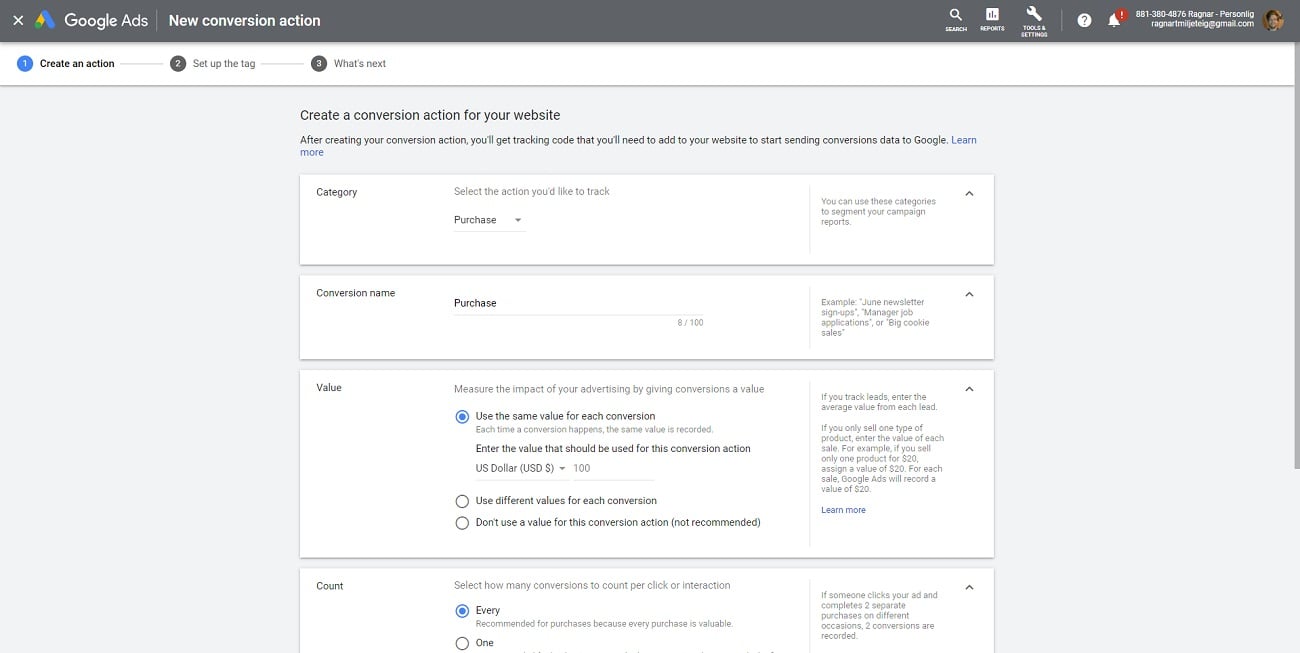
Next, select the conversion category based on what you want to measure and create a relevant name for your conversion.
Then, select the “Use the same value for each conversion” option, and enter a value based on what each purchase/lead is worth to your company.
To install it, you can either manually insert it into a thank you page or use Google Tag Manager.
![]()
If you choose to do it manually, all you need to do is copy and paste the snippet into the <header> meta-tag section of your thank you page. (For WordPress or other CMS users, you can use custom page header plugins or extensions to achieve this.)
![]()
Make sure you don’t install the conversion event on your homepage or landing page, as it will count any regular visit as a conversion.
It should only be included on a dedicated thank you page, the last destination of someone who makes a purchase or signs up for a newsletter/consultation/report.
Conversion tracking with dynamic values
If you have an e-commerce store, you don’t want to mess around with static conversion values. You must set up conversion actions that have unique or dynamic values, depending on product prices.
These conversions will track the unique value of each customer transaction and shopping cart.
Major providers like Shopify, BigCommerce, and WooCommerce support tracking codes so you can quickly set up these conversions.
Follow the same steps as above to create a conversion, except select the “Use different values for each conversion” option before proceeding.
![]()
Then, you need to follow the unique instructions for your platform to implement the tracking for your store:
If you use a less popular or custom e-commerce solution, you may need to insert custom code directly into your template files and find the right variables to share data on price, volume, and more.
If nobody on your team has the required expertise to implement the conversion tracking, you can find freelance professionals on platforms like Upwork.
Conversion tracking for B2B
If your company is in B2B, and the conversion point you track doesn’t equal a sale, you could calculate the average lead value based on average CLTV and conversion rates.
This basic approach to conversion tracking will give you a helpful indication of how much value different campaigns, ad groups, and keywords are generating.
Still, because the numbers aren’t representative of actual sales, it can be hard to spot meaningful patterns in LTV and revenue generated.
The ideal solution is to integrate your CRM with Google Ads, which can be complicated unless your CRM offers native integration.
Setting up conversion tracking is the first step to improving campaign performance on Facebook Ads and Google Ads.
But even with dynamic values set up perfectly, Google Ads conversion tracking will not give you 100% accurate numbers on ROI and performance.
The problem with Google/Facebook Ads conversion tracking
While the conversion tracking on advertising platforms like Google Ads or Facebook Ads can seem sophisticated at first glance, that doesn’t mean they are 100% accurate.
The main issue is that the conversion gets tracked in a vacuum — the platform doesn’t know the context of each visitor and the journey they took before arriving on that platform.
For example, remarketing or branded search campaigns often get credit for a lot of conversions. These campaigns will seem to generate insane ROI, but only because you don’t see the full picture.
When you start looking deeper, you can see that there’s more to each customer’s journey than a branded search ad. Why is someone Googling your company name in the first place? Maybe they saw a social media ad first or received a promotional email.
You won’t see that context by just relying on a single platform alone. To figure out which individual ad is making you money, you need context.
The real customer journey happens across a multitude of channels, so focusing on a single one won’t give you a realistic image of ROI or performance.
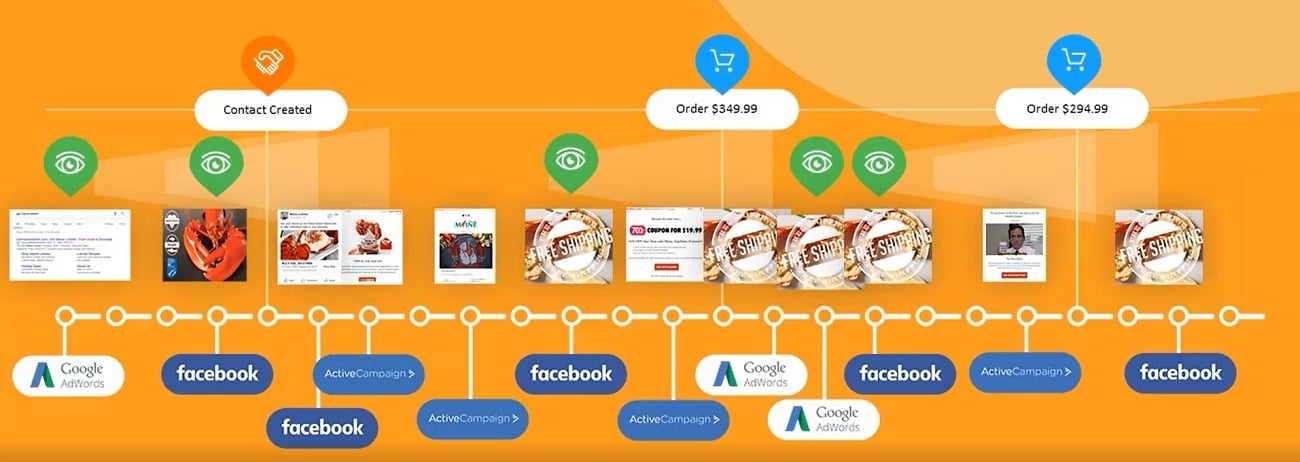
With a third-party attribution tool like Wicked Reports, you can integrate data from Facebook Ads, email marketing tools, your website, and CRM, and see the complete journey from start to finish.
You can also optimize your Google conversions with real sales data from your CRM with the Wicked Google Conversion Optimizer.
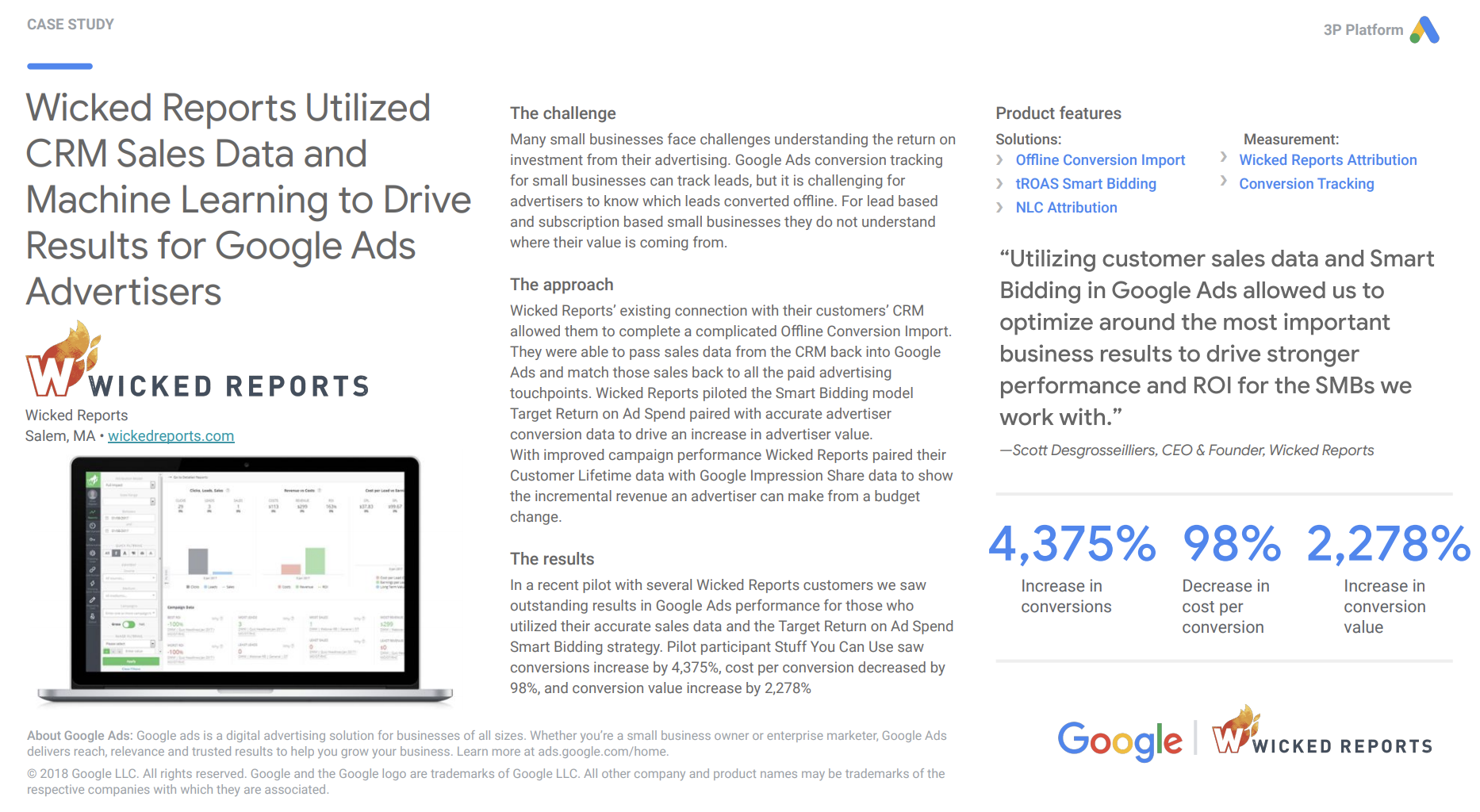
It shares real sales data with Google and allows you to take advantage of smart bidding options like target ROAS. It has helped our clients decrease their cost per conversion by up to 98%.
2) Use website analytics software
Businesses know that they can’t rely on the advertising platforms alone, with 39% of marketers singling out utilizing technology better to measure marketing impact as their top priority.
The simple act of installing and properly using website analytics can give you a competitive advantage over other small businesses. You will have access to data about where your users come from, which pages they visit, and how they interact with your site.
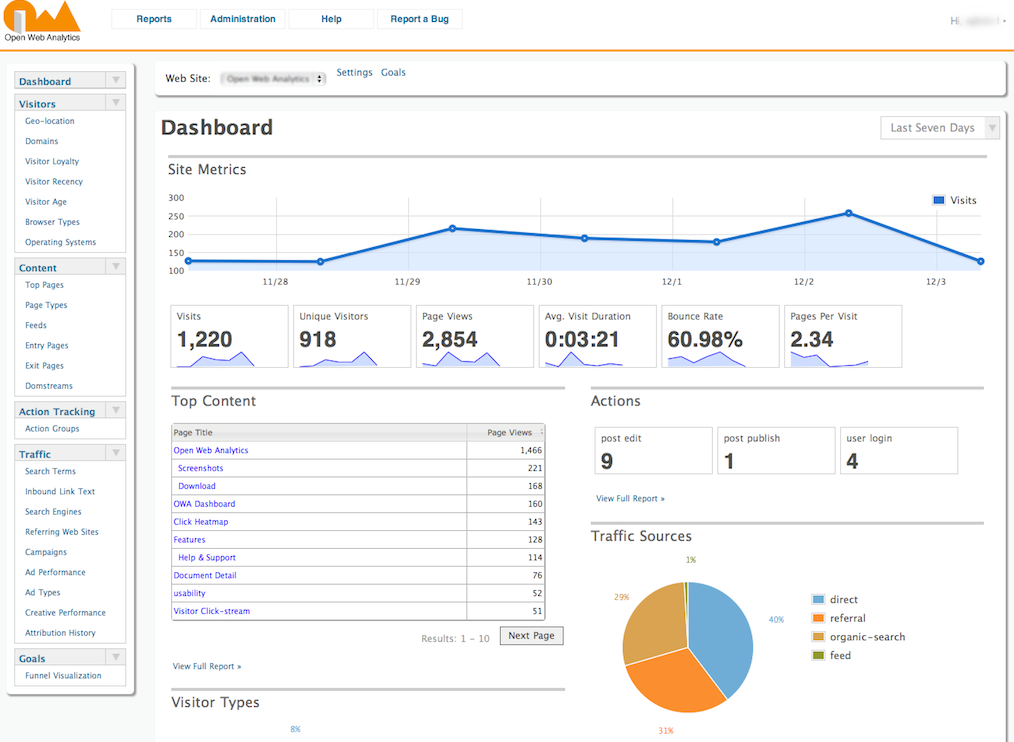
In a typical dashboard, you will be able to see visits, bounce rates, traffic sources, pages per visit, and more data points. These kinds of metrics will provide you with valuable insights about how to improve your site, but won’t show what drives revenue.
To use website analytics to measure conversions and ROI, you need to set up specific conversion goals, events, or actions.
In some cases, your CMS or platform will already have actions that the analytics software can automatically track.
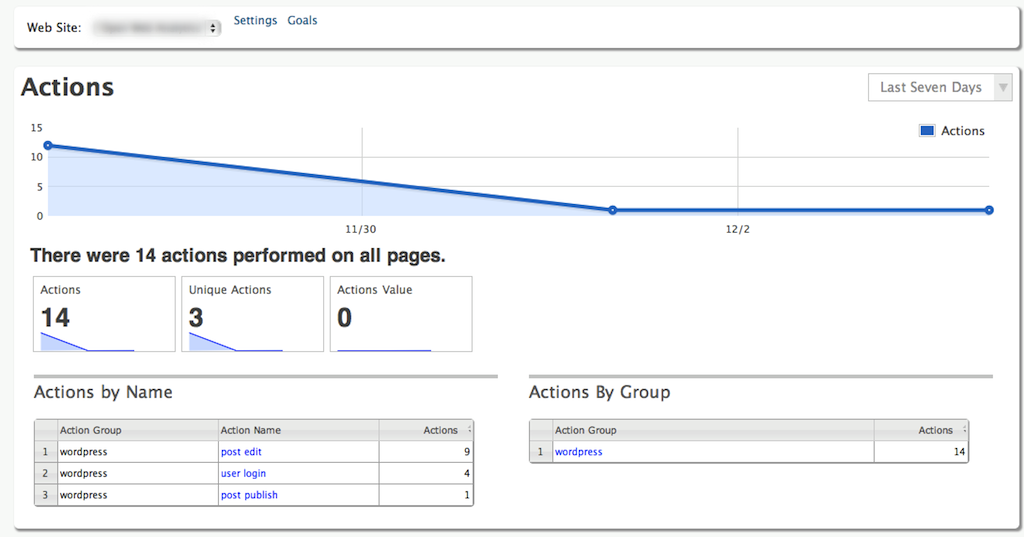
In this example, a website visitor used WordPress to log in, edit posts, and publish posts. But you can just as easily create and track actions for subscriptions, purchases, and more.
If you use an e-commerce solution, they will typically already have analytics extensions, apps, and plugins that you can use instead of starting from scratch.
Once you’ve installed the extensions, activating ecommerce tracking in your analytics will create a wide variety of goals and events.
You can then track the conversions to traffic sources and view reports that break down campaign or platform performance based on revenue.
While website analytics with event tracking is an improvement over single-platform conversion tracking, it’s not the ideal solution. The reports aren’t 100% accurate, and always following them like dogma can lead to mistakes in your marketing.
The problem with Google Analytics and attribution
While Google Analytics and other analytics platforms cover multiple paid and organic channels, it’s not the perfect solution to attributing sales and revenue.
Since it can be complicated to connect with a CRM or e-commerce platform directly, it will assign equal value to low-quality leads or sales that ultimately fell through.
Without native integrations to all your ad platforms, it doesn’t have all the data on your customers. That leads to a significant amount of conversions attributed to direct (no source), with numbers between 15-40% not being unusual.
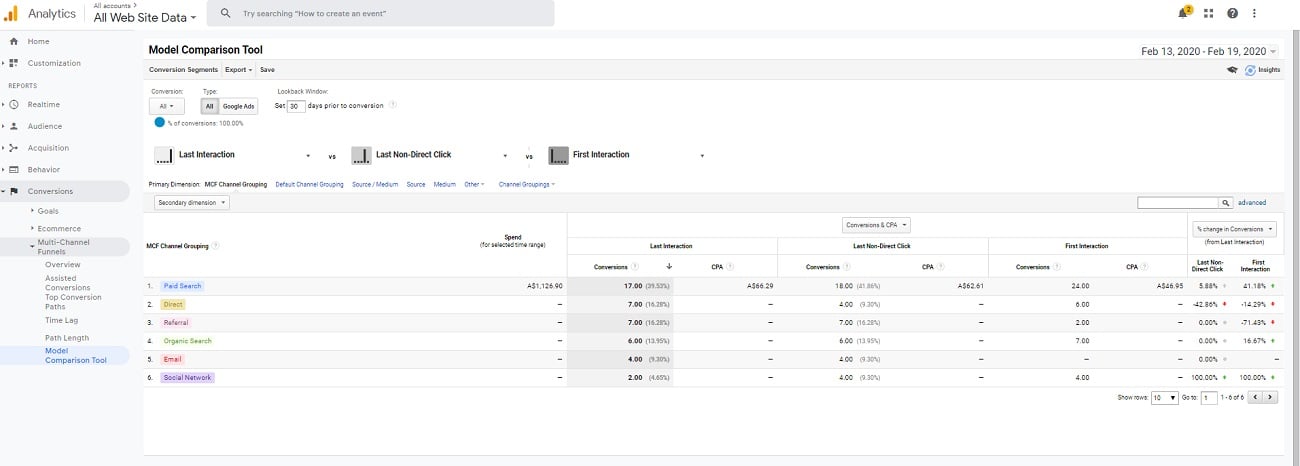
By being diligent with your UTM parameters, and connecting devices and actions directly with users in your CRM, and then using this data, you can reduce the number of misattributed conversions.
But it’s a lot of work to create a reliable attribution process from scratch.
3) Use smart attribution tools
24% of marketers report suffering from inaccurate marketing/media performance, despite implementing analytics/conversion tracking.
With a smart attribution tool, you can minimize wasted ad spend by tracking the complete picture over multiple channels and devices.
Centralized data means you no longer have to deal with limited single platform conversion data, and there are much fewer untracked events.
Wicked Reports uses platform integrations, first-party transaction data, and CRM data to deliver an unbiased view of the whole customer journey across all your platforms.
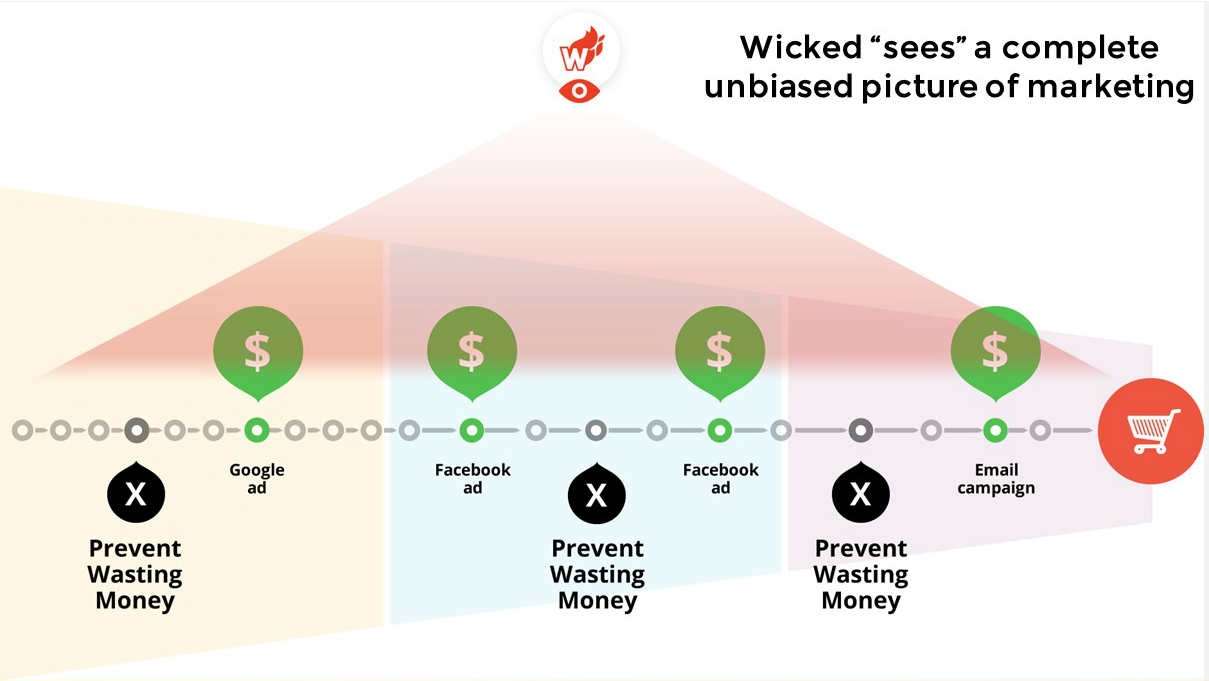
With this insight, you can avoid spending on unnecessary ads, and focus your marketing budget on the real moneymakers hidden among your overall digital marketing efforts.
You will also have complete data on the LTV of your customers, helping you see the whole ROI picture for your advertising campaigns on Facebook and Google Ads, as well as email marketing.
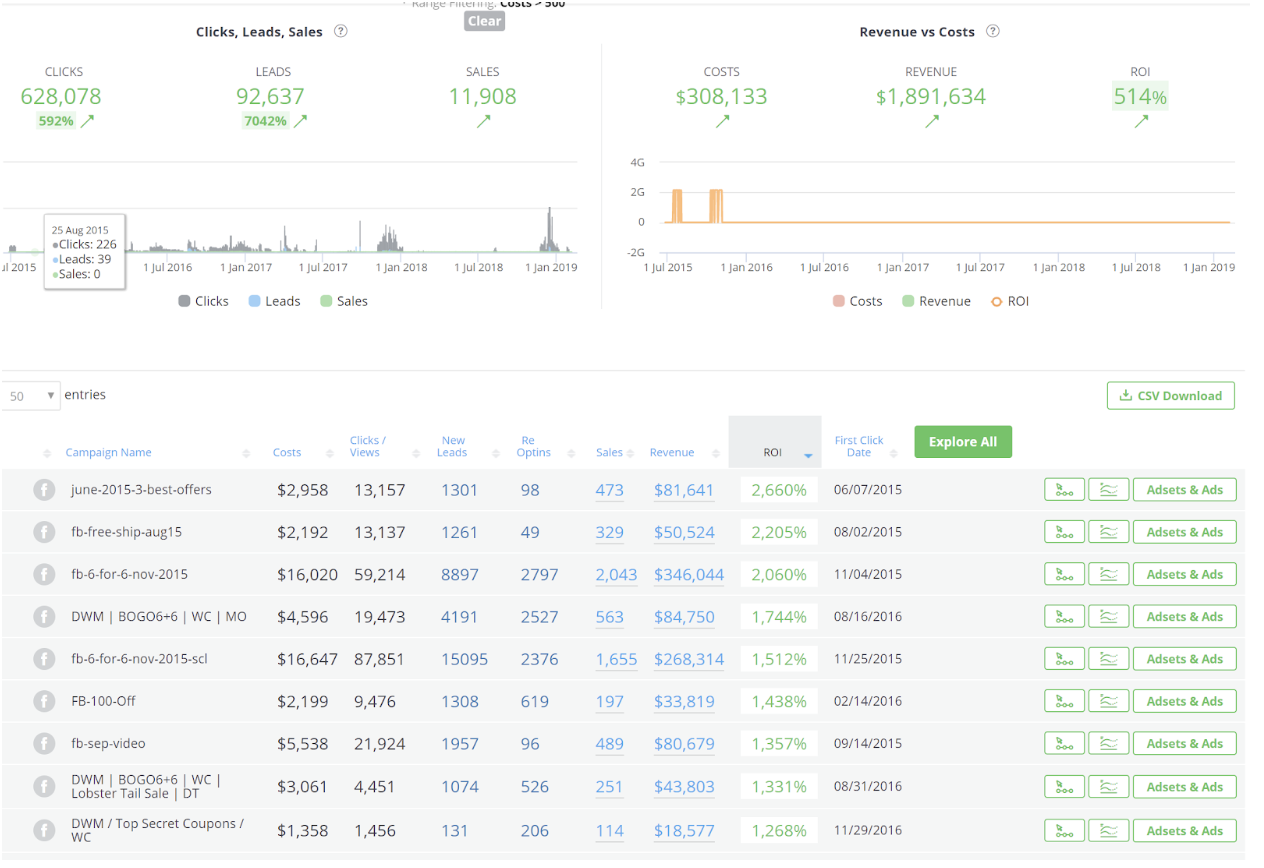
Each campaign gets its own ROI report, and advanced email tracking lets you focus on the revenue per email instead of open rates.
Plus, you will have access to audience breakdowns and the ROI your campaigns generate at different stages in the funnel.
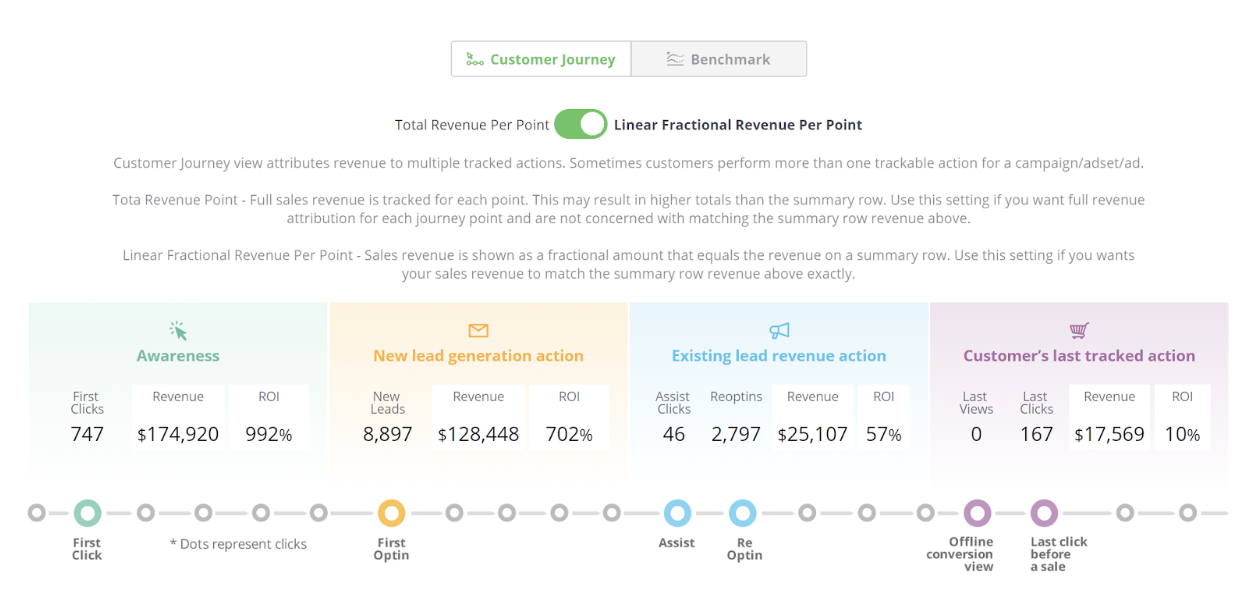
Mastering your customer data and using it to your advantage is the key to e-commerce growth in 2026 and beyond.
Real ROI data for not just every platform and campaign, but each stage of the funnel, is the foundation of any sustainable digital marketing strategy.
Conclusion
Not tracking the ROI of your campaigns is an easy way to waste your marketing dollars. It’s the equivalent of sailing without a compass, just hoping you’ll end up in the right place.
Just using basic conversion tracking or website analytics won’t get you there. You need to combine the data from all your sources; ad platforms, CRM, and website, into one.
It might sound complicated, but that’s why Wicked Reports does this for you, no custom development necessary.
With people-based tracking, Wicked Reports ties clicks to real people and orders. It shows you the exact revenue every channel and ad campaign generates over time. Then we combine sales data with other sources to recreate the customer journey.
With advanced reporting, you can see which ads generate top-of-funnel awareness, which ones create leads, which ones convert those leads into customers, and which campaigns are generating the highest average LTV customers.
If you want to see the real ROI data for all your digital marketing campaigns, demo our product today.
FAQ
Why is Net ROI more critical than ROAS for digital marketing success in 2026?
Gross ROI (ROAS) only measures sales revenue against ad spend. Net ROI, by contrast, is the actual measure of profitability, factoring in all associated costs (COGS, fulfillment, payroll) to give marketers a clear, actionable view of which campaigns are truly making money for the business.
How does Wicked Reports solve the problem of single-platform attribution inaccuracy?
Wicked Reports uses first-party data and platform integrations to track the entire customer journey across all channels (ads, email, search). This people-based, multi-touch attribution provides an unbiased view, assigning accurate credit to every touchpoint, unlike siloed platforms that overcredit the last click.
What is the primary challenge to accurate ROI tracking expected in 2026?
The continued shift away from third-party cookies and increased data privacy restrictions mean marketers must rely on robust first-party tracking and advanced attribution models. Relying on simple last-click models or platform-specific data will result in significant blind spots and wasted ad spend.


